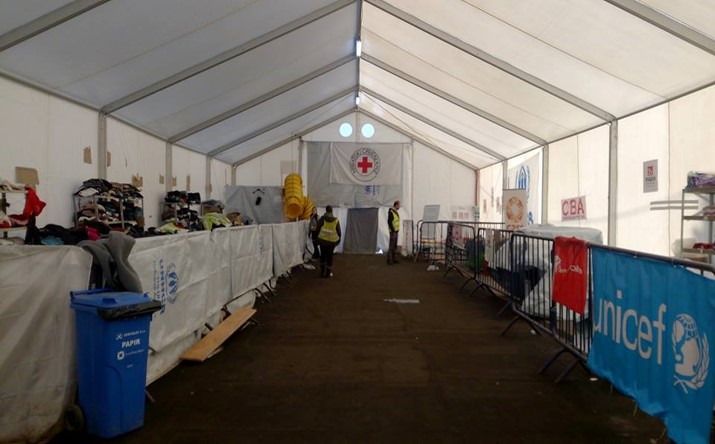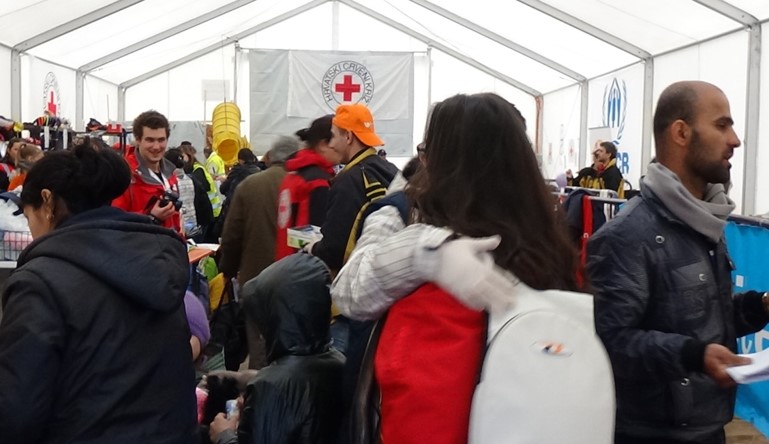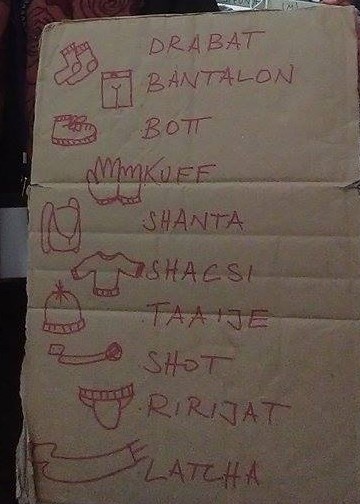Distribution Tent
The distribution tent in the Slavonski Brod camp was, in certain periods of its existence, a place refugees had to pass through after completing police registration. International and local humanitarian, religious and non-governmental organizations, agencies and associations, as well as the police, worked and collaborated in the tent.
The distribution tent in this camp was characterized by a specific circulation, brought about by the fact that most of the people passed through it to collect necessary supplies between leaving and boarding trains. This circular route was also evident in the design of the tent, which had an entrance on one side and an exit on the other, and its organization suggested a rapid flow and adhering to the humanitarian principle of fair distribution of food, clothing and footwear and hygiene items to the refugees.
During the several months of its existence, its purpose changed spontaneously and sporadically, from a space with a rapid flow of refugees being handed donations over a fence, to a place of diverse and multidirectional verbal and non-verbal communication, narratives and emotions between people who need help and those who distribute it in the rudimentary form of material things. This change was also reflected by the interior appearance of the tent, which at times resembled a store with shelves and hangers, and volunteers who, like experienced salespeople, tried to recognize the needs of refugees and provide them with service. Thus, the distribution tent provided a semblance of normality and the impression of a bazaar, with (limited) free choice and selection of donated goods (Škokić and Jambrešić Kirin 2017).
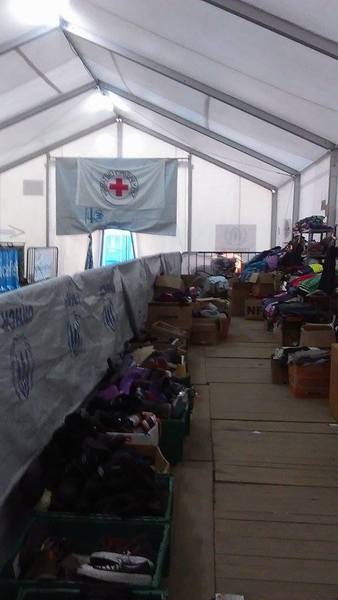
|
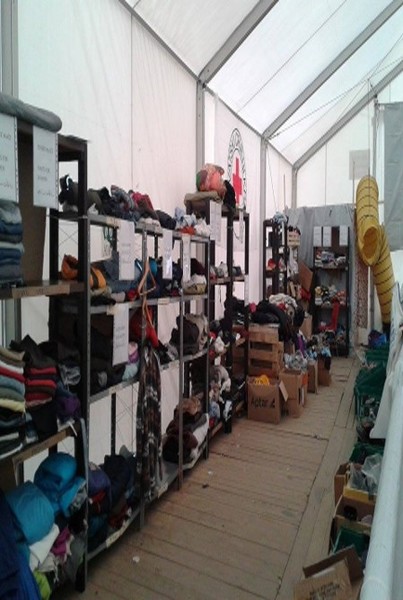
|
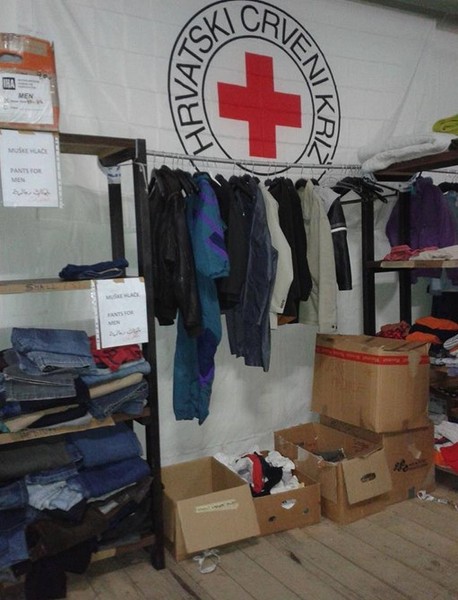
|
While the freedom of movement for refugees, as well as most of the volunteers, was limited and even completely curtailed in the rest of the camp, the distribution tent, where used or new clothes and shoes, hygiene packages for women, basic packages for small children and blankets and tea were distributed, was a place where people could move and spend time somewhat more freely and where volunteers and refugees could communicate. This is where volunteers could see if someone needed medical help or refer them to the tent managed by UNICEF and the association RODA, the so-called Roda tent, where mothers could feed and change their children. The tent also contained a fenced off section intended for family reunions with printed photos of missing and lost family members or friends. The distribution tent was also the site of occasional disputes between humanitarian organizations, primarily between the organization in charge of running the official warehouse providing clothes and shoes to the tent, and a smaller volunteer organization that managed the warehouse of non-governmental organizations. The disputes revolved around the quality and suitability of the clothes and shoes being distributed. Tensions were caused the by the lack of clothing in appropriate sizes, especially the lack of footwear, unclear criteria for when and what is brought from the warehouse, unsorted goods which were inadequate for the winter season, torn, tattered and dirty clothes from the official warehouse, and the efforts of the Croatian Red Cross and UNHCR, being the largest organizations operating in the tent, to separate their donations and prevent volunteers from other organizations from sharing them.
5/3/2022
Literature
Škokić, Tea and Renata Jambrešić Kirin. 2017. "The Shopping Center of Abnormal Normality. Ethnography of the Distribution Tent in the Refugee Camp in Slavonski Brod". Narodna umjetnost 54/1: 129-146.
